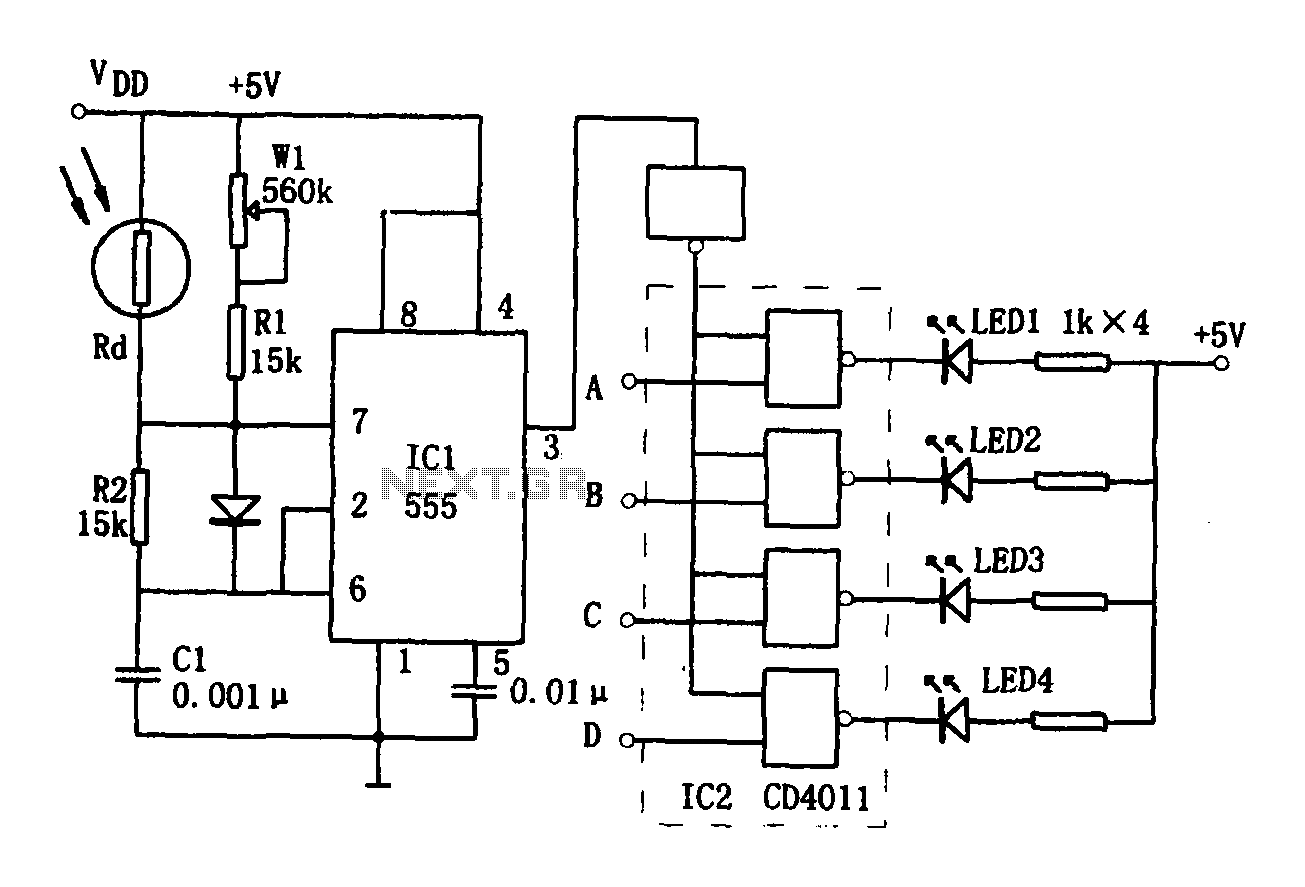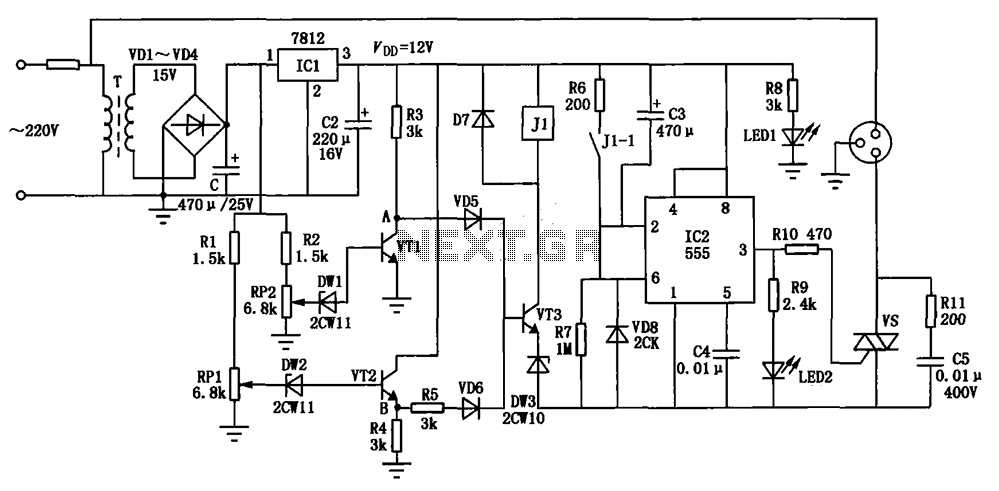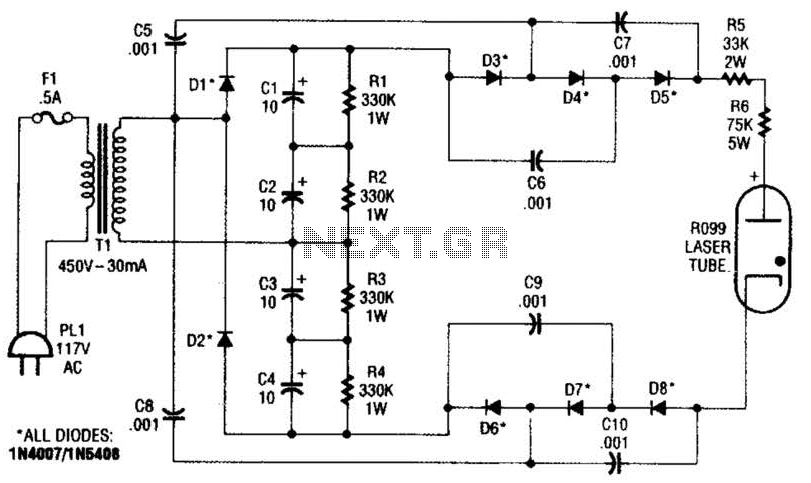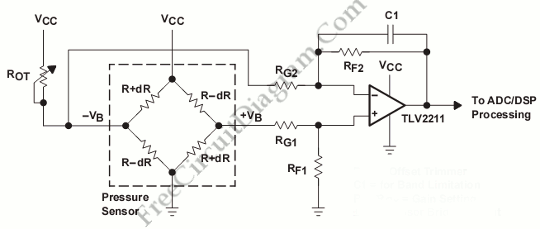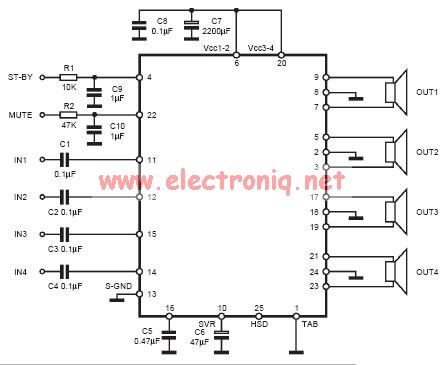
VU meter circuit for LM3915 PCB
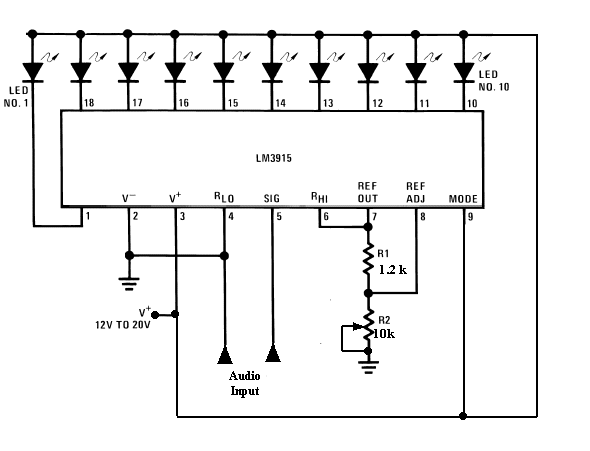
This circuit utilizes a single integrated circuit (IC) along with a minimal number of external components to display audio levels using ten LEDs. The input voltage can range from 12V to 20V, with a recommended operating voltage of 12V. The LM3915 is a monolithic integrated circuit designed to sense analog voltage levels and control the illumination of ten LEDs, providing a logarithmic display with a 3 dB per step resolution. The current drive of the LEDs is regulated and programmable, which eliminates the need for additional current limiting resistors. The IC includes an adjustable voltage reference and an accurate ten-step voltage divider. Its high-impedance input buffer can accept signals from ground level up to within 1.5V of the positive supply voltage, and it does not require protection against input voltages up to 35V. The input buffer drives ten individual comparators that are referenced to the precision voltage divider, achieving an accuracy typically better than 1 dB.
The circuit design based on the LM3915 is particularly effective for applications requiring a visual representation of audio levels, such as in audio mixing or monitoring equipment. The integration of an adjustable voltage reference allows for customization of the threshold levels at which each LED is activated, making it suitable for various input signal ranges. The high-impedance input buffer ensures that the circuit does not load the input signal, preserving the integrity of the audio signal being monitored.
The ten-step voltage divider provides precise voltage levels for the comparators, enabling accurate tracking of the input signal's amplitude. Each comparator corresponds to a specific voltage range, illuminating the respective LED based on the input signal's level. The logarithmic scaling of the display is beneficial for audio applications since human hearing perceives sound levels logarithmically.
Moreover, the ability to handle input voltages up to 35V without additional protection simplifies the design process, allowing for easier integration into existing systems. The programmability of the LED current drive enhances flexibility, enabling the user to adjust the brightness of the LEDs according to their requirements. Overall, this circuit offers a compact and efficient solution for visual audio level monitoring, combining simplicity with high performance.This circuit uses just one IC and a very few number of external components. It displays the audio level in terms of 10 LEDs. The input voltage can vary from 12V to 20V, but suggested voltage is 12V. The LM3915 is a monolithic integrated circuit that senses analog voltage levels and drives ten LEDs providing a logarithmic 3 dB/step analog display L ED current drive is regulated and programmable, eliminating the need for current limiting resistors. The IC contains an adjustable voltage reference and an accurate ten-step voltage divider. The high-impedance input buffer accepts signals down to ground and up to within 1. 5V of the positive supply. Further, it needs no protection against inputs of 35V. The input buffer drives 10 individual comparators referenced to the precision divider. Accuracy is typically better than 1 dB. 🔗 External reference
The circuit design based on the LM3915 is particularly effective for applications requiring a visual representation of audio levels, such as in audio mixing or monitoring equipment. The integration of an adjustable voltage reference allows for customization of the threshold levels at which each LED is activated, making it suitable for various input signal ranges. The high-impedance input buffer ensures that the circuit does not load the input signal, preserving the integrity of the audio signal being monitored.
The ten-step voltage divider provides precise voltage levels for the comparators, enabling accurate tracking of the input signal's amplitude. Each comparator corresponds to a specific voltage range, illuminating the respective LED based on the input signal's level. The logarithmic scaling of the display is beneficial for audio applications since human hearing perceives sound levels logarithmically.
Moreover, the ability to handle input voltages up to 35V without additional protection simplifies the design process, allowing for easier integration into existing systems. The programmability of the LED current drive enhances flexibility, enabling the user to adjust the brightness of the LEDs according to their requirements. Overall, this circuit offers a compact and efficient solution for visual audio level monitoring, combining simplicity with high performance.This circuit uses just one IC and a very few number of external components. It displays the audio level in terms of 10 LEDs. The input voltage can vary from 12V to 20V, but suggested voltage is 12V. The LM3915 is a monolithic integrated circuit that senses analog voltage levels and drives ten LEDs providing a logarithmic 3 dB/step analog display L ED current drive is regulated and programmable, eliminating the need for current limiting resistors. The IC contains an adjustable voltage reference and an accurate ten-step voltage divider. The high-impedance input buffer accepts signals down to ground and up to within 1. 5V of the positive supply. Further, it needs no protection against inputs of 35V. The input buffer drives 10 individual comparators referenced to the precision divider. Accuracy is typically better than 1 dB. 🔗 External reference
